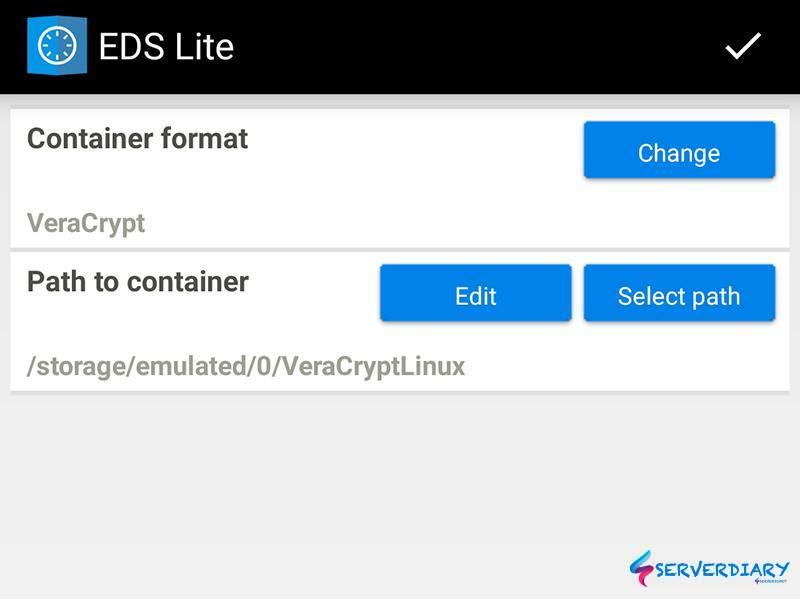

- #Truecrypt android generator
- #Truecrypt android software
- #Truecrypt android code
- #Truecrypt android windows
“Still, this points the way to future hardening of any projects that use Truecrypt as a base.”
#Truecrypt android code
“This is probably not a concern unless you’re performing encryption and decryption on a shared machine, or in an environment where the attacker can run code on your system (e.g., in a sandbox, or potentially in the browser),” Green said. It also said that TrueCrypt’s AES implementations are vulnerable to cache-timing attacks.
#Truecrypt android windows
The main source is from a call to the Windows API, yet if the call somehow fails, TrueCrypt will continue to create volumes or encrypt a disk using a key that’s partially predictable.Ĭryptography Services also said that volume header decryption uses integrity checks that don’t properly detect tampering. Ritter, who conducted the audit along with colleagues Alex Balducci and Sean Devlin, said TrueCrypt’s RNG gathers input from a number of sources, some of which are more predictable than others, but still not cryptographically sound. But it’s a bad design and should certainly be fixed in any Truecrypt forks.” These alternatives are probably good enough to protect you. Moreover, even if the Windows Crypto API does fail on your system, Truecrypt still collects entropy from sources such as system pointers and mouse movements. “This is not the end of the world, since the likelihood of such a failure is extremely low. Instead it silently accepts this failure and continues to generate keys,” Green said. When this happens, Truecrypt should barf and catch fire. “A problem in Truecrypt is that in some extremely rare circumstances, the Crypto API can fail to properly initialize.
#Truecrypt android software
“The NCC audit found no evidence of deliberate backdoors, or any severe design flaws that will make the software insecure in most instances.” Green said the TrueCrypt developers (their identity has still not been publicly revealed) based the RNG on a 17-year-old design that uses an entropy pool of unpredictable values from a number of different sources in the system, including the Windows Crypto API. The vulnerability calls into question whether the RNG is indeed predictable. The biggest issue that turned up during the audit was related to the random number generator, which generates keys that encrypt TrueCrypt volumes. The auditors were looking for a number of problems that would lead to the leakage of plaintext or key data, predictable outputs from the RNG, and other design and implementation flaws.
#Truecrypt android generator
The just-completed cryptanalysis was narrow in scope, and looked at the assorted AES implementations, the random number generator implementation, the SHA-512 hash function, key derivation functions, keyfiles, header volume format and cipher cascades. This was the second phase of the audit the first was completed almost a year ago and turned up fewer than a dozen vulnerabilities in the TrueCrypt bootloader and Windows kernel driver.
“TrueCrypt appears to be a relatively well-designed piece of crypto software,” wrote Matthew Green, a cryptography professor at Johns Hopkins University and one of the organizers of the Open Crypto Audit Project. None of the issues, however, lead to a bypass of confidentiality, the report said. Four vulnerabilities were identified in the code, two of them meriting a high-severity rating from the auditors. Ultimately, we like TrueCrypt as a project and hope the community continues to develop it.”Īuditors from NCC Group’s Cryptography Services arm finalized their report on March 13 and publicly released it today. “It’s difficult to identify a deliberately placed backdoor, but we feel we did a good audit over the code. “We did not go into the audit looking expressly for backdoors nor did we go in assuming there would be none and ignore them. “We approached the audit looking for any vulnerabilities we could identify, such as the misuse of a function or a memory corruption issue,” said one of the auditors, Tom Ritter, a security engineer with NCC Group Cryptography Services. Well, maybe not “nothing,” but certainly no signs of a deliberate backdoor from the NSA or any government entity, fears of which date back to the autumn of 2013, post-Snowden, and ignited talk to have the open source encryption software audited. The results are in from the cryptanalysis phase of the TrueCrypt audit, and they show-nothing.


 0 kommentar(er)
0 kommentar(er)
